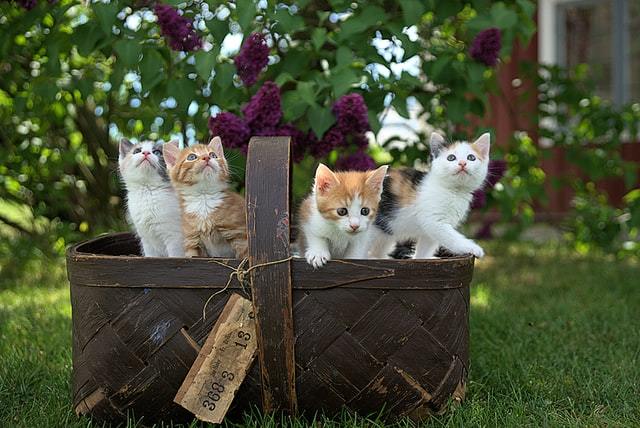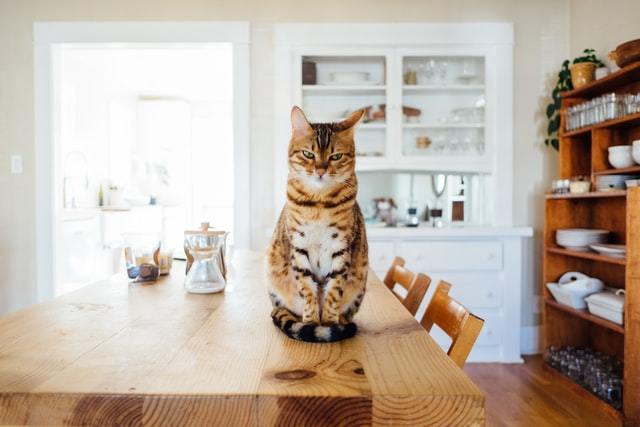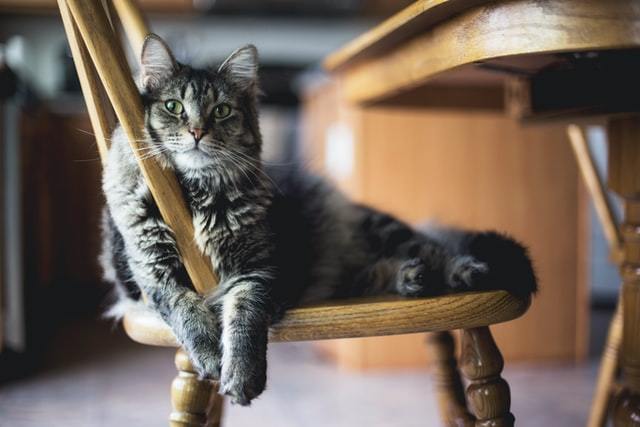Article at a Glance
All kittens go through the teething process between the ages of 2 and 6 months. Signs can wax and wane and not every kitten seems to be negatively affected.
- Watch out for signs of teething which can include a reluctance to eat, grumpiness and drooling.
- Owners can do a variety of things to help ease any discomfort, including modifying the diet offered and providing appropriate teething toys.
- It is best to not brush your kitten’s teeth while they are actively teething. However, we should aim to brush their teeth once all of their adult teeth have come through to minimise the risk of periodontal disease going forward.
Do Kittens Teeth?
Funnily enough, you would be forgiven for thinking that the answer to this question might be ’no’. Kittens don’t tend to make much of a fuss over teething and we rarely see the deciduous teeth which have fallen out. While they don’t want us to know about it, all kittens will lose their baby teeth and develop adult teeth.
A small number of individuals may experience a tough time and it is more obvious when these sensitive felines are teething. They may develop certain symptoms which are discussed in more depth below. For others, however, they will breeze through the kitten teething process and we will be unaware that anything has happened.
Fun Fact: Did you know a Scottish Ear Fold cat can lose its ear fold while teething? (Source).
When Kittens Start Teething?
A new-born kitten has no teeth at all, just plenty of gums! This ensures they can easily nurse from the mother cat without causing infection or discomfort for her. The first time a kitten teeths is when they are tiny babies, still suckling from their mother. They will have developed all of their deciduous (milk) teeth by about the age of 6 weeks. These teeth are razor sharp (most new kitten owners can attest to this!) and bright white. Don’t be alarmed if your kitten develops their somewhat teeth earlier or later than their peers, there is a wide range of what is considered normal.
When the adult teeth start to replace the deciduous teeth, we may start to pick up on some symptoms of discomfort. This teething process is more uncomfortable than the first one and a whopping 30 teeth need to break through the gumline. Most individuals will have cut all of their incisors by 3.5-4 months. After this, the canine teeth erupt and all four should have emerged by about 5 months of age. Next, come the pre-molars followed by the larger molars. While cats may experience teething discomfort at any stage, most owners notice the most distress as molars cut through the gumline.
For most, adult teeth start to be seen from three months and are fully in place by six to seven months. Very rarely, there can be a medical issue which delays teething. This interesting case study is of a 14 month old cat who experienced severely delayed teething which caused medical issues for her.
It isn’t uncommon for the deciduous canine teeth to have trouble falling out and these will sometimes remain in place even when the adult canine teeth have broken through the gum. While this can also occur with other teeth, it is the canines that are most frequently affected. This can result in food impaction and gingivitis so veterinarians advise that these surplus teeth are surgically removed.
Signs of Teething
As discussed, every individual is affected differently and some lucky kitties may not experience any signs of teething. However, some mild signs are commonly seen and it is important that owners are aware of what to be on the lookout for.
- Excessive chewing. Has your little angel started to chow down on your house slippers or torn their teddy bear apart? This chewing is a normal way that they try to cope with the discomfort they are experiencing. Try not to be too harsh on your cat as they are not doing it maliciously.
- Red gums. While our kitten probably won’t appreciate us looking inside their mouth, if we do, we may notice that their gums are bright red and swollen.
- A small amount of bleeding. Though we may not see blood within the mouth of the kitten, we may notice that their saliva is blood tinged or that there is a tiny amount of blood on their toys.
- A reluctance to eat. Kittens may go off their old favourites and might become extra fussy with food. Some will prefer wet food to dry food at this stage as it is easier to chew. You may also notice that your kitty takes longer to finish its meals and might even drop food from their mouth.
- Drooling. It can be uncomfortable to swallow when there is oral discomfort so many cats will drool in order to get rid of the saliva in their mouth.
- Irritability. Don’t take it personally if your little mister or madam has become a bit of a grump and wants to spend less time playing with you. The mild discomfort associated with teething can mean that they want some time alone to relax.
- Reduced grooming. You may notice that your kitten’s coat isn’t looking as clean and neat as it usually does. This is because they won’t feel much like grooming if they have any oral pain.
- A lucky owner may even spot a milk tooth on the floor. This is a definite sign that your cat is teething! Interestingly, we don’t often see the teeth as they are usually swallowed.
How can I Help my Teething Kitten?
Thankfully, there are plenty of things that can be done to help your poor little kitty. Pay close attention to their actions and body language so you can determine when they may need your assistance.
- Take advantage of the variety of teething products available on the market such as teething rings which can be frozen and age appropriate chew toys. Offer your kitty a variety of objects as they may gravitate towards one item more than another. A firm favourite with kittens in my clinic is a rag which has been soaked in a cat-safe broth and frozen.
- Hold off on the tooth brushing for now. While brushing teeth is very important when it comes to oral hygiene, forcing your cat to let you brush their teeth when their gums are inflamed is a recipe for disaster. It can create a tooth brushing aversion and your cat may never let you near their mouth with the toothbrush again! When the time comes, do not delay in introducing the tooth brush. This article explains why it is so very important.
- Not surprisingly, kittens will struggle to cope with eating hard kibble when they are in discomfort. You can switch them on to wet food or soak their kibble in warm water if they seem to be struggling. Long-term, wet or moist food is not the best thing for dental health but it is a good short-term option. Remember, any diet change should be made slowly over a few days to avoid stomach upset.
- Try not to be too rough when playing with your cat. Though they may get caught up in the moment and forget that their mouth is sore, they will remember soon enough if you yank a toy out of their mouth. Be gentle and they will thank you for it.
- If all else fails, you may wish to see your vet. Sometimes, a prescription of pain relief and anti-inflammatory medicine will be given if your cat is having trouble coping.
Top Tip: Teething kittens will put things in their mouth that they wouldn’t normally consider as interesting. Things like children’s toys, wool, batteries and plants may suddenly become an exciting thing to chew on. Now more than ever it is vital to ‘kitten-proof’ your home and keep all dangerous things well out of reach. All electrical cords should be completely covered to prevent electrocution.

The Take Home Message
While it is not nice to see your kitten in discomfort from teething, remember that it is a temporary and necessary process. Signs do not typically last long and most kittens cope well when we employ the right tactics. Remember to be kind and patient as your cat may need some extra love at this difficult time.
Dr. Linda Simon, BVMS, MRCVS
Veterinary surgeon,Dr. Linda Simon MVB MRCVS is a locum veterinary surgeon who has worked in London for the past 8 years. She graduated top of her class in small animal medicine from UCD, Dublin. She is currently a member of the Royal College of Veterinary Surgeons.



